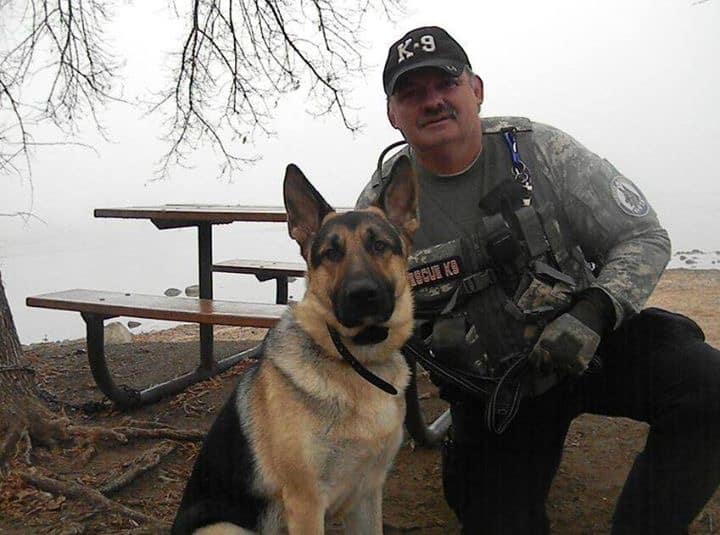
Ross Butterfield, EMT, is an EMSRB Examiner with Allied Medical Training. Ross is also a K9 Handler of an awesome search and rescue (SAR) dog called Bosco. He brought his enthusiasm for K9 Search and Rescue with him to AMT and recruited me to the Northstar SAR Team. In fact, my dog Coda comes from the same breeder that his dog, Bosco (pictured above) came from four and a half years ago.
Bosco is a very successful trailing search dog. Most people think of this type of tracking when they think of dogs searching for people. Trailing dogs scent on the ground and follow the path taken by the missing person. They work on a long lead line and their handler follows them closely. A scent article is required to help the dog find the missing person.
Bosco has been successful on many searches. He is able to scent the missing person in a group of people from an article such as a water bottle that was held by several people present. He can tell which scent is not from a person present and will follow the path taken by that (missing) person.
How does a dog do this? Well, humans shed skin cells at a rate of 50 million each minute. These cells drop on the ground and can be blown by the wind onto the nearest vertical surface, such as tall grass and trees. Once the trail is located, off goes the dog ‘running hot’ on a well-scented trail.
Dogs have a nose that has up to 300 million olfactory receptors, whereas people have about 6
million. Also, the area of a dog’s brain devoted to scent analysis is about 40 times greater than that part of the human brain, proportionately. (Source: www.dogster.com/lifestyle/dog-facts-sense-of-smell)
Every dog has a great sense of smell, but only some dogs have the intelligence, high energy, and strong drive to do search and rescue. It takes hundreds of hours each year to train search K9s, but also to keep the training maintained and keep challenging the dogs. For example, Bosco has followed trails that are over a week old, but the standard required for certification is 4 days. This is why it is best to ‘call in the dogs’ as soon as possible when someone is missing.
If you want to know more about search and rescue K9s, please visit www.northstarSAR.com. We are a volunteer medical response unit and welcome new people and donations.


